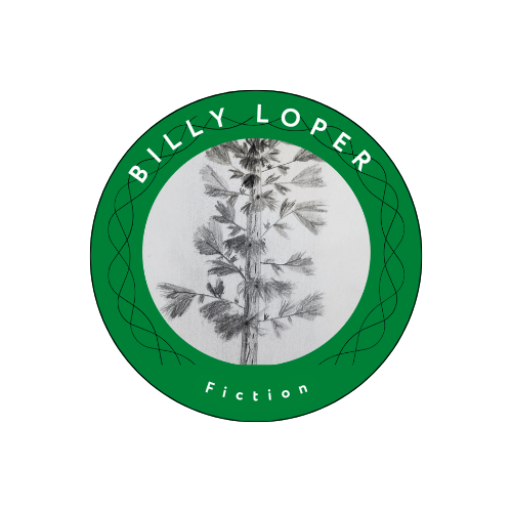A Note From Me: The Ballad of Dood and Juanita, and how it shows us to examine a narrative in context, has been on my mind lately. This is a longer one, so thanks for reading!
Spoilers for the plot of Dood and Juanita
Concept albums, or albums meant to explore a concept beyond musical composition itself, aren’t a new–well, concept. David Bowie was famous for his Ziggy Stardust concept albums. Actor and all around eccentric man, Christopher Lee wrote and performed a number of heavy metal concept albums based. Rock acts, Rap artists, indie darlings (see the phenomenal Phoebe Bridgers), and instrumentalists have taken on the task of telling loosely connected narratives through their art. Country music, especially the Country and Western sub-genre, has perhaps been the most fertile genre for the concept album. The likes of Willie Nelson, Johnny Cash, and Marty Robbins tackled the idea of the narrative west through their music more than once in their careers.
Sturgill Simpson’s 2021 concept album THE BALLAD OF DOOD AND JUANITA stands out as an interesting example of narrative storytelling, and it has an important lesson to teach on how we study those narratives. Sturgill first made use of the concept album in his 2019 outing SOUND & FURY, which was a hard rock abstract concept album, named after Faulkner’s (in)famous abstract novel. However, DOOD AND JUANITA is not an exercise in abstraction. Instead, it feels as if it is telling a story from an episode of GUNSMOKE, HAVE GUN WILL TRAVEL, or BONANZA.
DOOD AND JUANITA consists of ten songs, and each one serves as a main plot beat within the narrative. From Juanita’s kidnapping to the death of Dood’s dog Sam, Simpson tackles the story of a Kentucky pioneer’s journey to save his wife. The music, it goes without saying considering it is the Grammy Award winning Sturgill Simpson at the helm, is phenomenal. But considering it dispenses with the concept album’s typical abstract complexity, discerning listeners might find the narrative of DOOD AND JUANITA simple and formulaic.
Listeners expecting the weaving ideas of the Ziggy Stardust albums might be disappointed by Sturgill’s utilization of the concept album this time around. However, it is unfair to look at DOOD AND JUANITA through such a simple lense. While song to song, and plot beat to plot beat, the album’s narrative core feels formulaic, there is a lot more meat to dig into there than it might first seem.
Simpson has layered the story throughout the album in a way that reveals more and more details with repeat listens. Dood’s relationship with his love Juanita, his mule shamrock, and his Shawnee heritage, are only a few of the details that weave themselves throughout the narrative. The first full song on the album, track #2 “Ol’ Dood,” gives a great deal of detail about Dood’s personality and background in order to serve the narrative of the album. From that song alone the listener can see Dood as if he were a character on stage, a fact which is a testament to the clarity of Simpson’s lyrics. After returning to the song a second time, listeners might identify the way the song lays the groundwork for the rest of the album. The description of his ability with a rifle and his shawnee upbringing foreshadow the way that Dood eventually enacts his vengeance on Juanita’s kidnapper. For a narrative concept album that only has a runtime of about 30 minutes, DOOD AND JUANITA tells a pretty interesting and layered story.
The layered storytelling in DOOD AND JUANITA is not necessarily something revolutionary, and not even unique within the concept album sub-genre. However, it does serve as a recent example of something every reader, and writer should keep in mind.
In the post-post-[post?]modern era, media analysis has taken a lot of criticism. The “the curtains are blue,” argument comes to mind when I think of what internet media criticism has become. However, that criticism, especially the critical-rating style analysis popular in magazines and online, is not necessarily unwarranted.
Readers and media critics cannot, and should not, analyze the narrative quality of a young adult novel cannot in comparison with the works of Faulkner, Dickens, and Melville. Movie goers cannot examine the narrative quality of a children’s cartoon against the works of Martin Scorsese and Christopher Nolan. Even more important than avoiding these comparisons is avoiding inter-discipline comparisons, which can create a total misunderstanding of the narrative context a piece of art exists within.
David Bowie’s most well known concept album, THE RISE AND FALL OF ZIGGY STARDUST AND THE SPIDERS FROM MARS, is a complex, abstract, and beautiful work of art. Any listener will notice that the narrative at its core has much more nuance and layered metaphor than DOOD AND JUANITA. ZIGGY STARDUST is also three times longer than Simpson’s Country and Western narrative. In the context of concept albums, ZIGGY STARDUST is a Jack Kerouac novel, whereas DOOD AND JUANITA is a Jack London short story.
No, DOOD AND JUANITA doesn’t have a particularly deep narrative, but in the context of other concept albums, there is a lot to love in Simpson’s latest outing.
Check it out here if you’re interested (not a sponsor).

